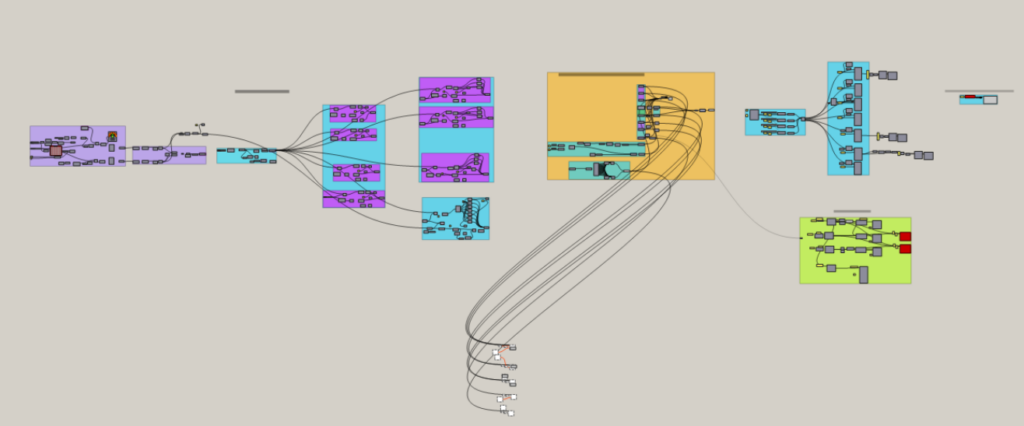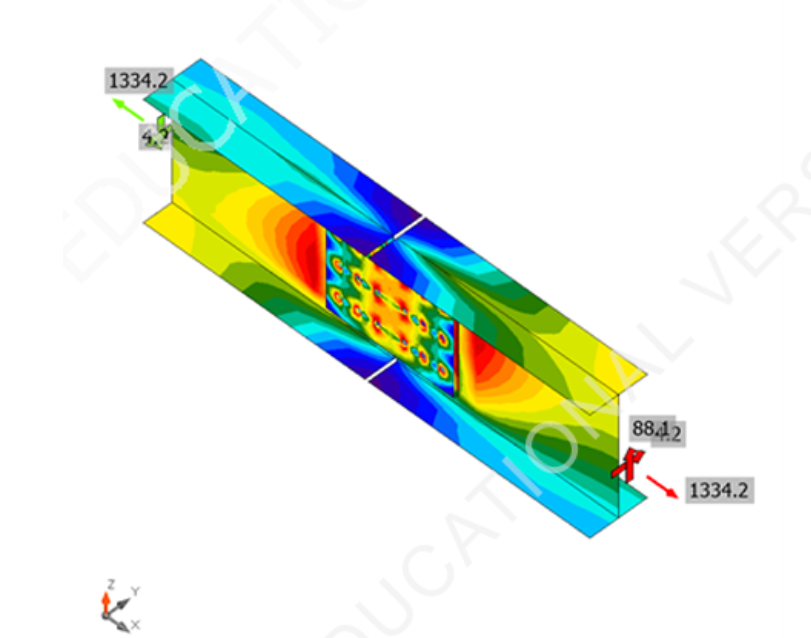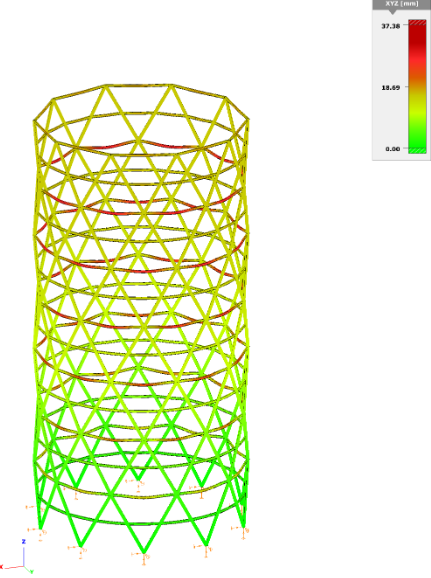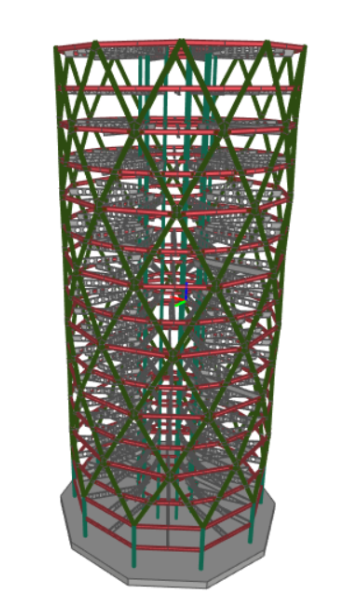Introducing the student prize winner of The Steel Lion Award 2024. The project introduces the parametric design and was created by Darius Dumitraşcu, a final year student from Romania.
GENERAL DATA
For Darius Dumitraşcu, the winner of the Student Award, the task was the design of an office building, based on a steel structural system. He proposed to create a fictional building, giving him the freedom of creating any kind of geometry for the structure, which provided him an opportunity to approach the design with parametrization more freely. The final structure was inspired by The Gherkin from London, and it’s diagrid structure.
The next step was to build a parametric model which could help him build up and analyze several models with slightly different geometries by only changing a few parameters, and could be used to generate the final model.
THE SCRIPT

- Definition of starting parameters
- Geometry generation
- Data sorting
- Tekla model generation
- Defining Consteel loads
- Defining Consteel elements
THE GEOMETRY
To simplify the parametrization process, he decided to create the base of the structure on a regular polygon with n sides, which gave him the chance to play with the density of the diagrid columns and see how many are necessary. The base form determined the rest of the geometry, distribution of beams and angle at which the floors are rotated by. In total, the script took 3 weeks to build, and it allowed to create and analyze any form in minutes.
LOAD DEFINITION
The Romanian norms and Eurocode were used to define the loads of the structure, according to an office building. The load from mechanical machines is 1.5 kPa. The loads were applied automatically thanks to the Pangolin plugin, which allowed the generation of the load combinations for each model as well, except seismic load and its combinations.


GENERATING THE CONSTEEL MODEL
Thanks to the parametric script, he was able to create models instantly with element end conditions, their exact position, loads, and load combinations. Then these models could be analyzed by the global check module, and see the level of utilization of the elements, find the critical points of the structure, and if needed, make slight changes in the model to make it more optimal.
After selecting the final model, thanks to the communication of Consteel with IDEA StatiCa, it was easy to create the models of the connections and calculate them in IDEA StatiCa.
The skeleton of the Tekla Structures model was built parametrically, which was followed by the modeling of the connections. These steps led to the final drawings and the finalization of the project.

CONCLUSION
The parametric model made it possible to create and analyze different configurations of the structure in a short time. The complexity of the structure was facilitated by the parametric script. Overall, the three-week build time of the script paid off, as the final models were created faster and the optimal shape of the structure could be found. The script can also be used for similar tasks for any n-sided polygonal structure.
If you want to get inspired by the work of other submitted Structural Engineers, take a look at all projects on the website of The Steel Lion Award.



